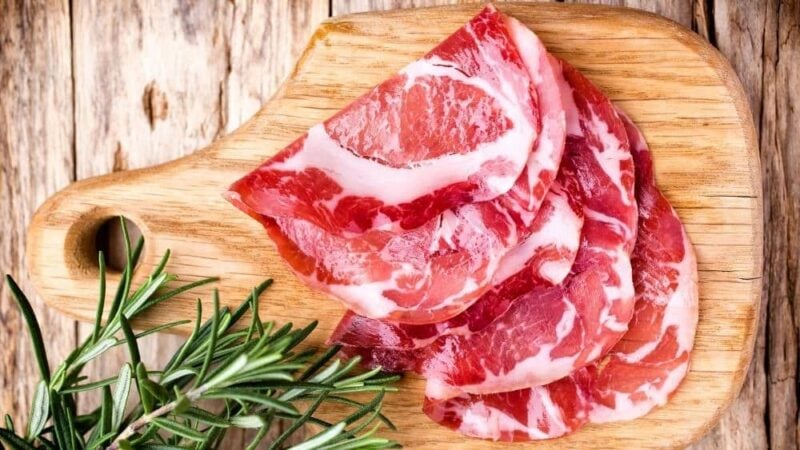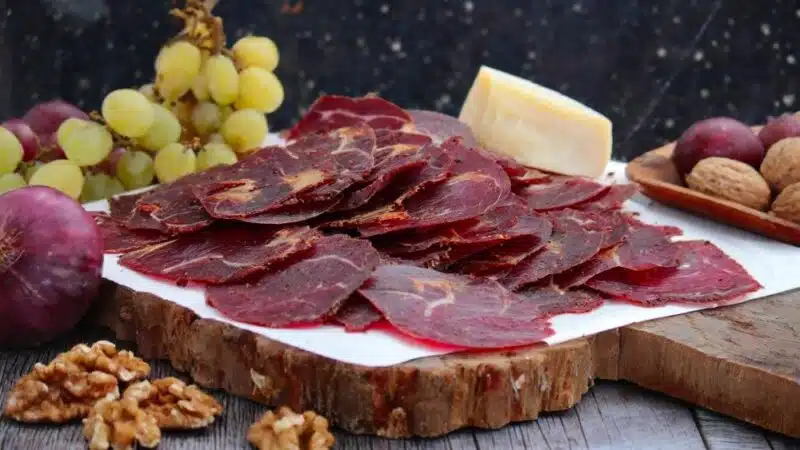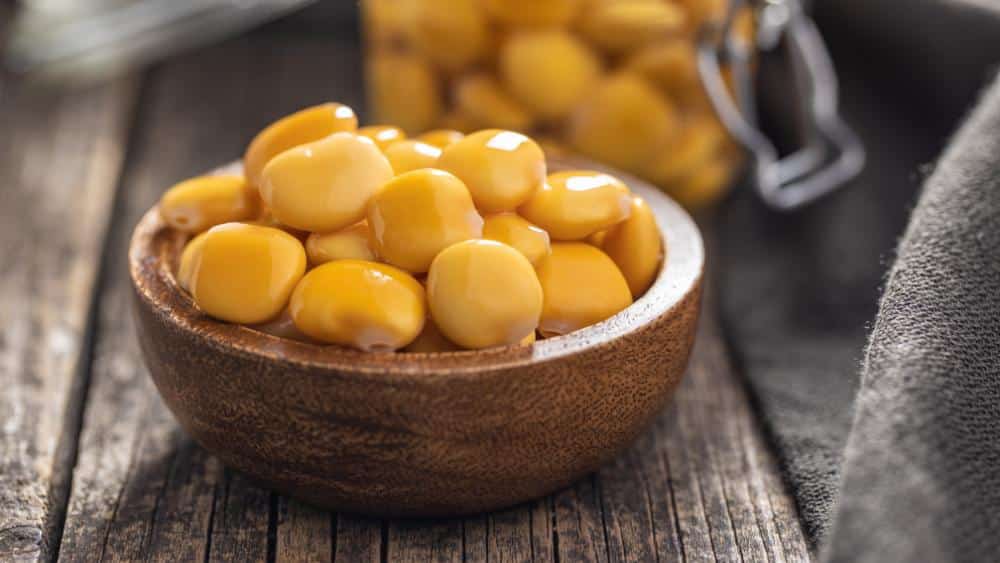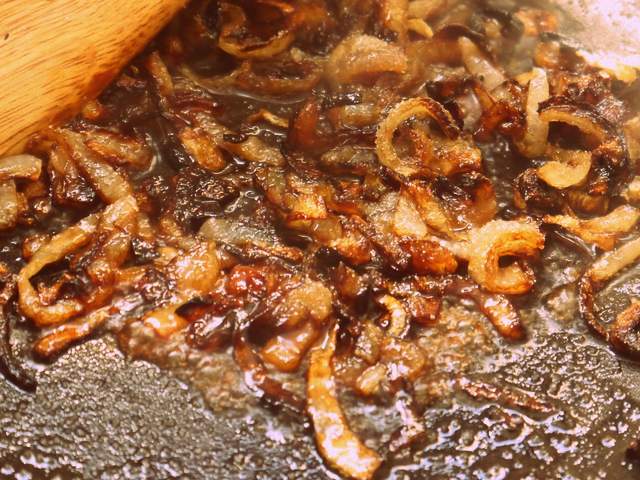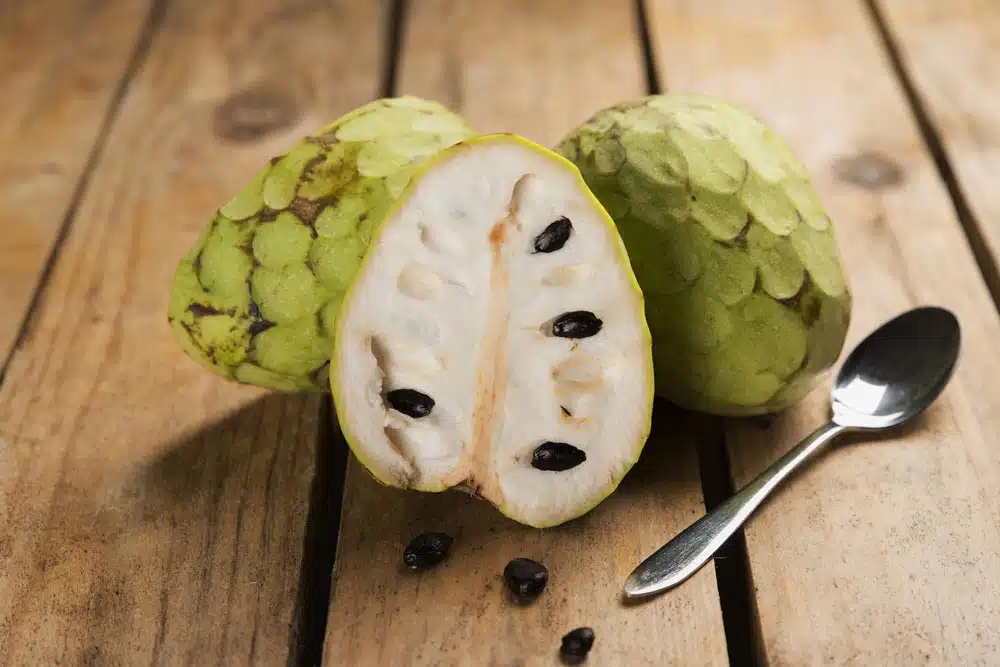Hello followers of Paulina Cocina! Today we're going to talk about Cecina, a very traditional Spanish cured meat made from beef. At first glance, it might be mistaken for ham, but its preparation method, flavor, and aroma are completely different.
If you'd like to learn more about this sausage, we invite you to read this article, which promises to provide a wealth of information about cured meat. We've also included two recipes to help you enjoy this ingredient in other ways.
Content table
About jerky
Cecina, with its distinctive name, is a cured and dehydrated meat that has become a true culinary treasure. It's a very popular cold cut in Spain, especially in León, where it's produced in large quantities; but it's also very common in Latin America, particularly in Mexico.
The word "cecina" comes from the Latin "siccus," which means dry. And that's precisely what characterizes this cold cut: dried meat at its finest.
This cured meat, which bears certain similarities to ham, has become a classic appetizer in Spanish cuisine, as it is served on cold cuts platters, but is also included in many recipes.
How do you get it?
This ingredient is obtained from beef, although it can also be made with other meats, such as horse, goat, or venison. To prepare it, it is cut into thin strips, salted, and air-cured. The drying process can take weeks , resulting in meat that can be preserved for a long time without refrigeration.
Its flavor is a sensorial journey, intense and concentrated. A perfect balance of saltiness and smokiness makes it an irresistible and delicately fibrous bite.
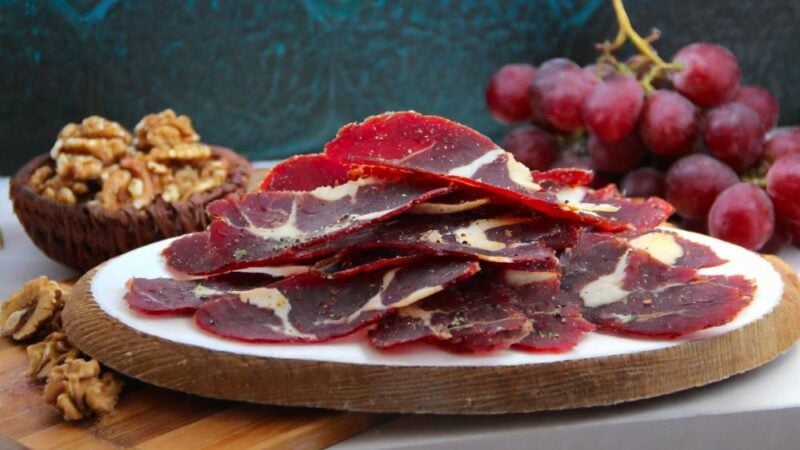
History and origin of jerky meat
The history is rich and steeped in tradition. It is believed to have originated in Roman times, when the Romans needed to preserve meat during their military campaigns. Over the centuries, this preservation technique was perfected, and this meat became a prized delicacy.
In the Middle Ages, this sausage became an essential food for travelers and farmers in the León region. León cattle ranchers, known for breeding high-quality cattle, found in this sausage a way to maximize the use of every part of the animal, reducing waste.
In Latin America, this cured meat also has a long history. In countries like Mexico, it's prepared in a special way, often smoked and seasoned with local chilies and spices. It's an essential ingredient in traditional dishes, such as cecina enchilada.
What part of the animal is it?
It's obtained from different parts of the animal, but the most commonly used is lean beef, specifically the hindquarters . This choice is due to the fact that this area contains less fat and more muscle fibers, making it ideal for the curing and drying process.
This is a versatile ingredient that can be enjoyed alone as an appetizer or in sandwiches, but it's also used in a variety of recipes. Its flavor and texture complement dishes such as salads, pasta, or even homemade pizzas .
What is the difference between cecina and ham?
It's common to wonder what the difference is between cured meat and ham , two delicacies in the world of sausages. The main difference lies in the preparation and curing process. While cured meat is slowly air-dried, ham is cured in brine and then air-dried in a controlled manner. This gives each a unique and distinct flavor and texture.
Follow on Instagram ( here )
and on YouTube that I upload new videos every week ( click here )
2 recipes with cecina
1. Cecina salad
Yields: 4 portions
Preparation time: 15 minutes
Ingredients
- 150 g jerky cut into strips
- 200 g of arugula
- 1 ripe pear, thinly sliced
- 1/4 cup toasted walnuts
- 2 tablespoons of olive oil
- 1 tablespoon balsamic vinegar
- Salt and pepper to taste
How to make cecina salad step by step
- In a large bowl, combine the arugula, pears, and toasted walnuts.
- In a separate bowl, combine the olive oil, balsamic vinegar, salt, and pepper. Drizzle the vinaigrette over the salad and toss well.
- Place the strips of cecina on top of the salad and serve.
2. Cecina and goat cheese pizza
Yield: 2 portions
Preparation time: 20 minutes
Ingredients
- 1 pizza dough
- 100 g of cured meat
- 100g goat cheese, crumbled
- 1/4 cup arugula
- 2 tablespoons of tomato sauce
- 1 tablespoon of olive oil
- Salt and pepper to taste
How to make a cured meat and goat cheese pizza step by step
- Preheat the oven to 220°C. Meanwhile, spread the tomato sauce over the pizza dough.
- Add the goat cheese and cecina on top.
- Bake the pizza in the preheated oven for 10-12 minutes, or until the crust is golden brown and crispy.
- Remove from the oven and top with fresh arugula. Drizzle with a little olive oil and season with salt and pepper.
